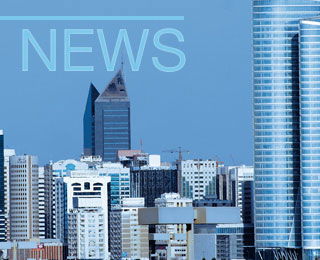Weaker-than-expected growth in Indonesian cement consumption and fierce competitive pressures have led to a tough pricing environment, resulting in local producers looking to mitigate the impact of a challenging market. However, latest volume data by the Indonesian Cement Association (ASI) reveal strong domestic and export sales for the month of April, but can this recovery be sustained?
Domestic cement consumption in 2016 was virtually flat (+0.1 per cent) compared to the previous year due in part to delays in the government's infrastructure programme. In 1Q17 consumption only increased marginally (0.9 per cent), but recent figures for April 2017 published by the ASI show much stronger volumes, with monthly demand up 11.5 per cent YoY to 5.063Mt. Total sales (including exports of 224,277t) rose by 13.9 per cent to 5.29Mt. Strong consumption in Java has proved to be the base of this demand growth and the other major islands (Kalimantan and Sulawesi) are still reporting declines while Sumatra remains flat. This latest data brings total demand for the first four months of the year to 19.82Mt (+3.4 per cent YoY) and total sales for the period to 20.42Mt (+4.8 per cent). However, despite robust domestic and export sales for the month of April and an encouraging year-to-date (YtD) performance, it is still quite modest start.
The export factor
To mitigate the impact of the weaker market and as capacity build-up continues despite an oversupply scenario, local producers have been looking at other ways to sustain profitability and exports have played a key part in this. Cement and clinker exports are estimated to have reached 1.6Mt in 2016, a 60 per cent rise compared to the previous year. YtD exports were up 92.5 per cent YoY to 599,000t. Further increases are expected going forward and are definitely helping to raise total sales volumes, but regional competition in the export markets is also anticipated to intensify.
Improving performance
To maintain profitability, Semen Indonesia, the country's leading producer with a market share of over 40 per cent, said earlier this week that it would look to double the contribution of its non-cement producing interests, such as its cement packaging unit, ready-mixed concrete division, GGBS and logistics business. These are expected to contribute a cumulative 20 per cent of the total firm's revenue, from 10 per cent currently. As part of its strategy to improve performance, the firm plans to raise IDR3trn (about US$225.6m) from a bond sale to refinance debts to its subsidiary PT Semen Tonasa, while the rest will be used as working capital. Management have also indicated that they are seeking to acquire either a building materials company, logistics, or energy company to support the company's top and bottom line growth. In the first quarter of this year, Semen Indonesia's net profit dropped 27.5 per cent to IDR746bn from IDR1.03trn in the same period last year. However, the producer's local sales in April 2017 were up nine per cent to 2.15Mt, representing 42.3 per cent of the country’s domestic sales.
Indonesia's second-largest producer, PT Indocement, said strict cost management partially compensated margin pressure from lower prices in the first quarter of this year. Domestic sales by the HeidelbergCement group company fell by 3.8 per cent YoY, owing to restrained market demand in its main markets of Jakarta, Banten and West Java. However, including exports, sales volumes decline by 0.1 per cent in the quarter. With the average selling price was "significantly lower" than the previous year, the company focussed on taking initiatives early on in the year with measures such as its Operational Excellence Programme, Fixed Cost Reduction Programme and managing efficient kiln utilisation. On the upside, Indocement reported a 12 per cent increase in April volumes, including a rise in shipments in Java, resulting in YtD volumes now being up. Pricing in April also stabilised (flat sequentially) as locals are no longer cutting prices, according to HeidelbergCement management.
Meanwhile, Holcim Indonesia recorded a 12 per cent decline in net sales for the three months to the end of March 2017 to IDR2.158m from last year’s IDR2.455m. Despite the overall sales decline, Holcim said it managed to achieve lower costs, in particular 8.3 per cent off distribution cost to IDR172bn through several initiatives to optimise assets and distribution channels. Going forward, the country's third-largest producer believes that the realisation of delayed infrastructure projects and private housing are, in fact, expected to create a rebound in the remaining nine months ahead.
A sustained recovery?
National cement consumption is largely anticipated to be better this year and is forecast to grow by around five per cent. Upcoming infrastructure projects will likely boost cement demand as will an expected rise in some commercial and residential projects with drivers including the deregulation of the mortgage sector. However, despite the uptick in April sales, industry commentators have noted that the property sector is yet to pick up and caution that sustained cement sales recovery remains doubtful. The coming months should prove whether further growth can be maintained, but sales will be affected by the forthcoming Ramadan season which spans the end-May to end-June 2017 period.
Moreover, the cement surplus situation is not expected to turn around in the near term. Overcapacity is anticipated to climb from 30Mta in 2016 to 45Mta in 2017, according to ICR Research, which means that continuing tight competition is expected. "Assuming that the increase in cement consumption per year was only 5-7 per cent, the industry still would sit on overcapacity until 2021," Widodo Santoso, chairman of the ASI, recently told local press.
Projections for 2017 suggest that the market share for the three largest producers will fall by 10 per cent by the end of the year, and small local and foreign companies will increase their share. Further price reduction would also severely undermine industry profitability and may lead to industry consolidation. In the meantime, producers will continue to focus on operational efficiency and other measures, including boosting exports to maintain viable utilisation rates.
